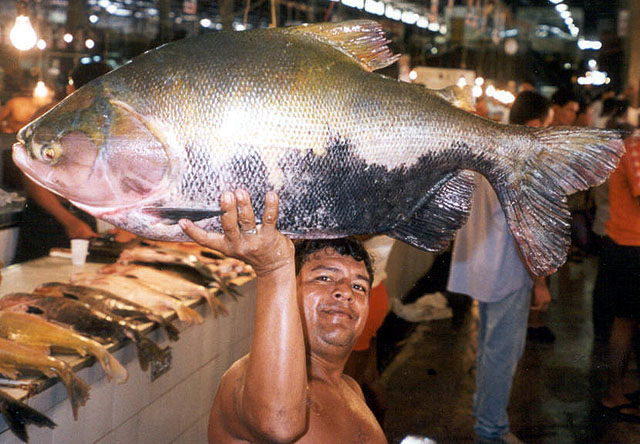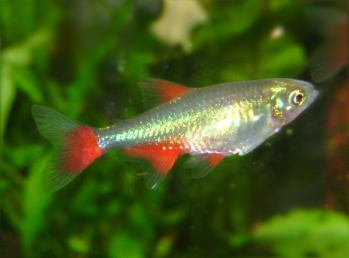|
Serrasalmid
The Serrasalmidae (serrasalmids) are a family of characiform fishes native to freshwater habitats of South America. They include more than 90 species. The name means "serrated salmon family", which refers to the serrated keel running along the belly of these fish. Fish classified as Serrasalmidae are also known by these common names: pacu, piranha, and silver dollar. These common names generally designate differing dental characteristics and feeding habits. Description Serrasalmids are medium- to large-sized characiform bony fishes that reach about long, generally characterized by a deep, laterally compressed body with a series of midventral abdominal spines or scutes, and a long dorsal fin (over 16 rays). Most species also possess an anteriorly directed spine just before the dorsal fin extending from a supraneural bone; exceptions include members of the genera '' Colossoma'', '' Piaractus'', and '' Mylossoma''. Most serrasalmids have about 60 chromosomes, ranging fro ... [...More Info...] [...Related Items...] OR: [Wikipedia] [Google] [Baidu] |
Piranha
A piranha (, or ; ) is any of a number of freshwater fish species in the subfamily Serrasalminae, of the family Serrasalmidae, in the order Characiformes. These fish inhabit South American rivers, floodplains, lakes and reservoirs. Although often described as extremely predatory and mainly feeding on fish, their dietary habits vary extensively, and they will also take plant material, leading to their classification as omnivorous. Etymology The name originates from Old Tupi '' pirãîa'', being first attested in the 1587 treatise ' by Portuguese explorer Gabriel Soares de Sousa. ''Piranha'' first appears in 1869 in English literature, likely borrowed from Portuguese. Taxonomy and evolution Piranhas belong to the family Serrasalmidae, which includes closely related omnivorous fish such as pacus. Traditionally, only the four genera '' Pristobrycon'', '' Pygocentrus'', '' Pygopristis'', and '' Serrasalmus'' are considered to be true piranhas, due to their specialized teeth. H ... [...More Info...] [...Related Items...] OR: [Wikipedia] [Google] [Baidu] |
Pacu
Pacu () is a common name used to refer to several species of omnivorous South American freshwater Serrasalmidae, serrasalmid fish related to piranhas. Pacu and piranha do not have similar teeth, the main difference being jaw alignment; piranha have pointed, razor-sharp teeth in a pronounced underbite, whereas pacu have squarer, straighter teeth and a less severe underbite, or a slight malocclusion, overbite. Pacu, unlike piranha, mainly feed on plant material and not flesh or Fish scale, scales. Additionally, the pacu can reach much larger sizes than piranha, at up to in total length and in weight. Name The common name ''pacu'' is generally applied to fish classified under the below listed Genus, genera. Among these, several genera contain species where commonly used English names include the word ''pacu'', as listed. *Subfamily Colossomatinae **''Colossoma'' – black pacu, black-finned pacu, giant pacu **''Mylossoma '' **''Piaractus'' – red-bellied pacu, small-scaled pacu ... [...More Info...] [...Related Items...] OR: [Wikipedia] [Google] [Baidu] |
Characiform
Characiformes is an order of Actinopterygii, ray-finned fish, comprising the characins and their allies. Grouped in 18 recognized families, more than 2000 different species are described, including the well-known piranha and tetras.; Buckup P.A.: "Relationships of the Characidiinae and phylogeny of characiform fishes (Teleostei: Ostariophysi)", ''Phylogeny and Classification of Neotropical Fishes'', L.R. Malabarba, R.E. Reis, R.P. Vari, Z.M. Lucena, eds. (Porto Alegre: Edipucr) 1998:123-144. Taxonomy The Characiformes form part of a series called the Ostariophysi, Otophysi within the superorder Ostariophysi. The Otophysi contain three other orders, Cypriniformes, Siluriformes, and Gymnotiformes. The Characiformes form a group known as the Characiphysi with the Siluriformes and Gymnotiformes. The order Characiformes is the sister group to the orders Siluriformes and Gymnotiformes, though this has been debated in light of recent molecular evidence. Originally, the characins were ... [...More Info...] [...Related Items...] OR: [Wikipedia] [Google] [Baidu] |
Mylossoma
''Mylossoma'' is a genus of serrasalmids from tropical and subtropical South America, including the basins of the Amazon, Orinoco, Lake Maracaibo and Paraguay- Paraná. These common fish are found both in main river sections and floodplains. They support important fisheries and based on a review by IBAMA, they are the seventh most caught fish by weight in the Brazilian Amazon. They primarily feed on plant material such as seeds and fruits (to a lesser extent invertebrates), and in their ecology they generally resemble the larger tambaqui (''Colossoma macropomum''). ''Mylossoma'' reach up to in length and in weight. Fossil remains are known from the Middle Miocene-aged Pebas Formation of Peru. Species There are currently 5 recognized species in this genus:Mateussi, N.T.B., Pavanelli, C.S. & Oliveira, C. (2016): Molecular identification of cryptic diversity in species of cis-Andean ''Mylossoma'' (Characiformes: Serrasalmidae). ''Mitochondrial DNA Part A: DNA Mapping, Sequencing ... [...More Info...] [...Related Items...] OR: [Wikipedia] [Google] [Baidu] |
Serrasalmus
''Serrasalmus'' is a genus of piranhas. They are collectively known as pirambebas; the "typical" piranhas like the piraya piranha are nowadays placed in '' Pygocentrus''. Like all piranhas, ''Serrasalmus'' are native to South America. These fish are predatory, have sharp teeth and generally have a rhomboid shape. In some, the shape is more ovoid, particularly in old specimens. Some ''Serrasalmus'' species can exceed (''S. manueli'' and ''S. rhombeus'', according to OPEFE), placing them among the largest Serrasalmidae. Middle Miocene-aged fossil remains of ''Serrasalmus'' are known from the Pebas Formation of Peru. Species There are at least 31 recognized species in this genus: * '' Serrasalmus altispinis'' Merckx, Jégu & dos Santos, 2000 * '' Serrasalmus altuvei'' Ramírez, 1965 (''caribe pinche'') * '' Serrasalmus aureus'' (Spix & Agassiz, 1829) * '' Serrasalmus auriventris'' ( Burmeister, 1861) * '' Serrasalmus brandtii'' Lütken, 1875 (white piranha) * '' Serrasalmus ... [...More Info...] [...Related Items...] OR: [Wikipedia] [Google] [Baidu] |
Pygopristis
''Pygopristis denticulata'', also known as the lobetoothed piranha, is a species of piranha. It is a rare South American characiform fish found in the Orinoco River basin, rivers of the northern and eastern Guiana Shield, and tributaries of the lower Amazon River. Like other piranhas, it is found in freshwater, with specimens of this species typically found in acidic clearwater or blackwater environments. Despite their ferocious reputation, many piranhas have broader diets; this species feeds on the scales of other fish as juveniles, but transitions to a broader diet of aquatic insects, small fish, and fruits as adults. Biology ''P. denticulata'' grows to about in total length. It has 62 chromosomes.''P. denticulata'' has pentacuspid teeth and a middle cusp that is usually only slightly larger than the other cusps. This is unlike other piranhas, which have tricuspid teeth with a larger middle cusp, making the teeth appear triangular. Taxonomy Within the family Serrasalm ... [...More Info...] [...Related Items...] OR: [Wikipedia] [Google] [Baidu] |
Silver Dollar (fish)
Silver dollar is a common name given to a number of species of fishes, mostly in the genus '' Metynnis'', tropical fish belonging to the family Serrasalmidae which are closely related to piranha and pacu. Most commonly, the name refers to '' Metynnis argenteus''. Native to South America, these somewhat round-shaped silver fish are popular with fish-keeping hobbyists. The silver dollar is a peaceful schooling species that spends most of its time in the mid- to upper-level of the water. Its average lifespan is less than ten years but can live longer in captivity. A benthic spawner and egg scatterer, the adult fish will spawn around 2,000 eggs. This breeding occurs in soft, warm water in low light. Silver dollars natively live in a tropical climate in the sides of weedy rivers. They prefer water with a pH of 5–7, a water hardness of up to 15 dGH, and an ideal temperature range of 24–28 °C (75–82 °F). Their diet is almost exclusively vegetarian and in captivity they will o ... [...More Info...] [...Related Items...] OR: [Wikipedia] [Google] [Baidu] |
Catoprion
''Catoprion'' is a genus of serrasalmids from tropical South America, including the basins of the Amazon, Essequibo, Orinoco and Paraguay rivers. It was believed to be a monotypic In biology, a monotypic taxon is a taxonomic group (taxon) that contains only one immediately subordinate taxon. A monotypic species is one that does not include subspecies or smaller, infraspecific taxa. In the case of genera, the term "unisp ... genus until the 2020 description of '' C. absconditus''. Species There are 2 described species: * '' Catoprion mento'' * '' Catoprion absconditus'' References {{Taxonbar, from=Q19757948 Serrasalmidae Ray-finned fish genera Taxa named by Johannes Peter Müller Taxa named by Franz Hermann Troschel ... [...More Info...] [...Related Items...] OR: [Wikipedia] [Google] [Baidu] |
Piaractus
''Piaractus'' is a genus of large serrasalmid from South America. The two traditionally recognized species of ''Piaractus'' are very similar in appearance and were formerly included in the genus ''Colossoma'', which currently only contains another similar species, the tambaqui (''Colossoma macropomum''). A third ''Piaractus'' was described in 2019 as a new species, but it was formerly considered a subpopulation of ''P. brachypomus''. Species There are currently three recognized species in this genus: * ''Piaractus brachypomus'' ( G. Cuvier, 1818) (Pirapatinga or red-bellied pacu) * ''Piaractus mesopotamicus ''Piaractus mesopotamicus'', the small-scaled pacu, Paraná River pacu or simply pacu (a name shared with Pacu, other species), is a South American ray-finned fish that is native to the Paraguay River, Paraguay-Paraná River basin,Nico, L.; and B ...'' ( Holmberg, 1887) (small-scaled pacu or Paraná River pacu) * '' Piaractus orinoquensis'' Escobar et al., 2019 References ... [...More Info...] [...Related Items...] OR: [Wikipedia] [Google] [Baidu] |
Colossoma
The tambaqui (''Colossoma macropomum'') is a large species of freshwater fish in the family Serrasalmidae. It is native to tropical South America, but kept in aquaculture and introduced elsewhere. It is also known by the names black pacu, black-finned pacu, giant pacu, cachama, gamitana, and sometimes as pacu (a name used for several other related species). The tambaqui is currently the only member of ''Colossoma'', but the '' Piaractus'' species were also included in this genus in the past. Distribution The tambaqui is native to freshwater habitats in the Amazon and Orinoco basins of tropical South America. In nutrient-rich whitewater rivers such as the Madeira, Juruá, Putumayo (Içá) and Purus it ranges throughout, all the way up to their headwaters.Araujo-Lima, C.A.R.M.; and M.L. Ruffino (2003). Migratory Fishes of the Brazilian Amazon. Pp. 233—302 in: Carolsfeld, J.; B. Harvey; C. Ross; and A. Baer (editors). Migratory Fishes of South America. In nutrient-poor black ... [...More Info...] [...Related Items...] OR: [Wikipedia] [Google] [Baidu] |
Acnodon
''Acnodon'' is a genus of serrasalmids found in South America South America is a continent entirely in the Western Hemisphere and mostly in the Southern Hemisphere, with a considerably smaller portion in the Northern Hemisphere. It can also be described as the southern Subregion#Americas, subregion o ..., with three recognized species: * '' Acnodon normani'' Gosline, 1951 * '' Acnodon oligacanthus'' ( J. P. Müller & Troschel, 1844) * '' Acnodon senai'' Jégu & dos Santos, 1990 References Serrasalmidae Fish of South America Taxa named by Carl H. Eigenmann {{Characiformes-stub ... [...More Info...] [...Related Items...] OR: [Wikipedia] [Google] [Baidu] |
Characidae
Characidae, the characids, is a family of freshwater subtropical and tropical fish belonging to the order Characiformes. They are found throughout much of Central and South America, including such major waterways as the Amazon and Orinoco Rivers.Nelson (2006) These fish vary in length; many are less than . The name " characins" is a historical one, but scientists today tend to prefer "characids" to reflect their status as a, by and large, monophyletic group (at family rank). This family includes some of the first characiforms to be described to science, such as '' Charax'' and '' Tetragonopterus'', and thus lend their name to the order, as well as to common names such as "characin" and " tetra". Past taxonomic treatments had a much more expansive definition of the family, including numerous South American fish families such as the piranhas and dorados, as well as the African alestids. Following multiple taxonomic revisions, this was eventually restricted to just the Americ ... [...More Info...] [...Related Items...] OR: [Wikipedia] [Google] [Baidu] |




